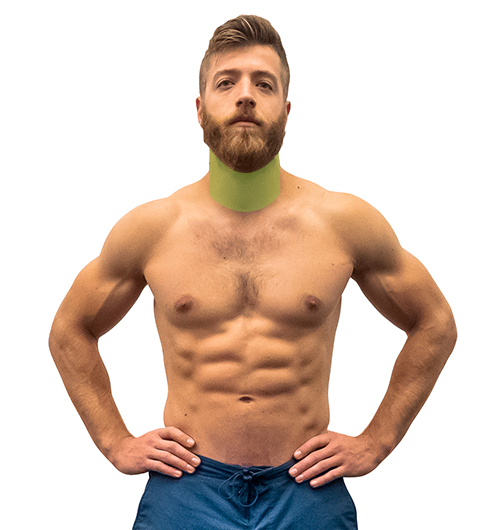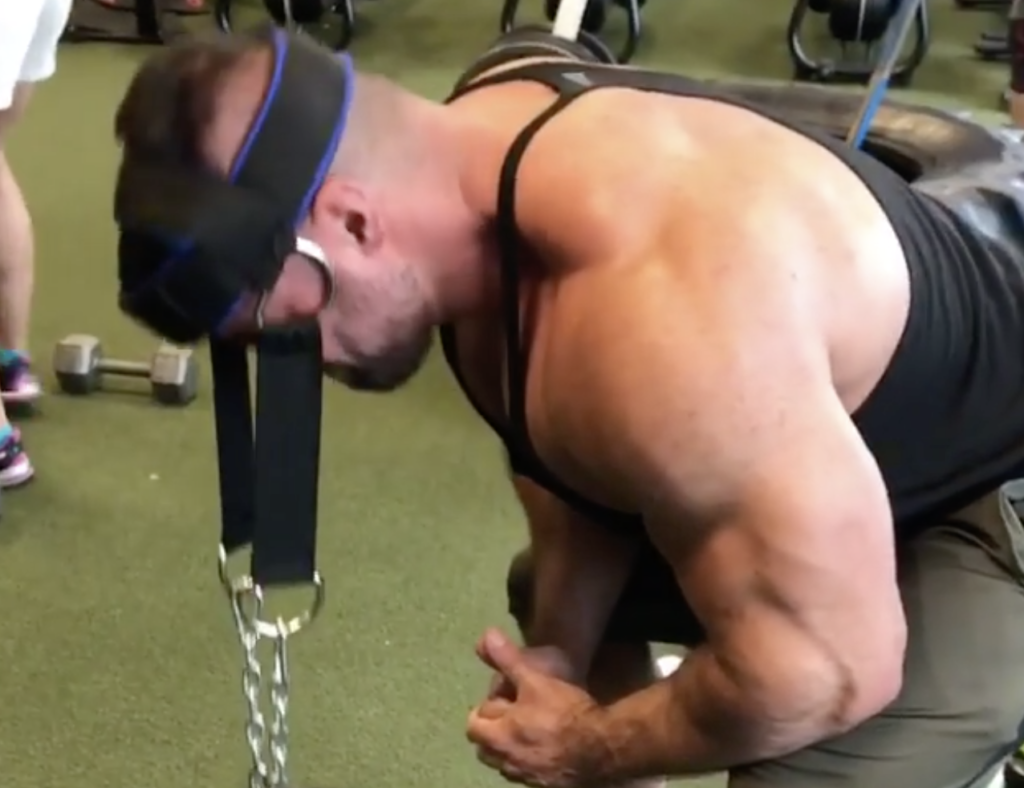The neck is arguably the most important part of the body when it comes to longevity and daily health. The neck muscles will benefit indirectly with multiple forms of training, but there’s no denying how useful direct neck training can be for some populations.
The neck muscles help keep the head upright and stable, and they’re responsible for our ability to look up, down, and rotate the head from side to side. There are dozens of small muscles in the neck, but two of the major neck muscles worth knowing include the sternocleidomastoid (front of the neck) and trapezius (back of the neck).
A strong neck is useful for much more than looking great, it can help protect us from blunt forces and whiplash, and it can even help with things like neck pain.
In a 2008 Danish study, researchers analyzed how neck-related exercises impacted a group of desk working women who complained of chronic neck pain (1). After 10-weeks of a dedicated upper body training regimen, the group of women reported a decrease in neck pain. Now, that isn’t to say exercise is always the options, but it could be a useful preventative to keep one’s neck healthy through the stages of life.
Disclaimer: Neck training should be taken with extreme care, and loading should only equate to what one can handle comfortably with good form. We always recommend using a coach to ensure form and loading is properly prescribed.
The good part of neck training for anyone hesitant with the idea is that multiple upper body exercises will indirectly strengthen the neck musculature. To help guide you through neck training, we’ve included our three favorite neck exercises below.

Neck Exercises
1. Shrugs
The first exercise to make our favorite neck exercise list is the shrug. The shrug is a fantastic exercise for indirectly training the next for a few reasons. First, it can be performed at any fitness level and it’s incredibly simple to learn. Second, it’s a movement that can be performed for strength, hypertrophy, and power, so one can completely cater the shrug to their goals.
Thirdly, shrugs help strengthen the back of the neck, as the traps run up to the base of the skull, which can help support the body’s posture and ability to absorb freak instances of whiplash in accidents.
Learn everything there is to know about the shrug with our shrugs exercise guide!

2. Dumbbell Row
The dumbbell row is another great and common exercise that can indirectly strengthen the neck. We like this exercise for neck training because for many, it’s already a movement that they’re performing in their workouts and it can used at any fitness level.
If you already use dumbbell rows, then keep rowing, but if not and your goal is a stronger neck, then they might be useful to incorporate.
Dumbbell or barbell? Both types of rows can benefit the upper body and neck, learn all of the benefits of the dumbbell row.
3. Neck Flexion and Extension
Neck flexion and extension exercises should be performed extremely light and with high reps. These movement are not designed to be “ego” focused, as their main goal is to strengthen the small muscles in the neck that won’t need as much of a stimulus to grow. These movements can be performed in multiple ways, and we’d recommend doing your research and finding a coach before proceeding into them blindly!
Check out four of our favorite direct neck training exercises!

Other Highest-Rated Neck Exercises
edit post

Overhead Squat Exercise Guide
edit post

How to Z Press – Muscles Worked, Exercise Demo, Benefits, and Variations
edit post

Dumbbell Rear Lateral Raise: Muscles Worked, Exercise Demo, and Benefits
edit post

Bent Over Lateral Raises: Muscles Worked, Exercise Demo, and Benefits
edit post

Snatch Grip Push Press – Exercise Guide, Video Demo, and Benefits
edit post

The Sots Press – How To Benefit Your Training
References
1. Publishing, H. (2019). Strength training relieves chronic neck pain – Harvard Health. Harvard Health. Retrieved 11 January 2019, from https://www.health.harvard.edu/pain/strength-training-relieves-chronic-neck-pain
